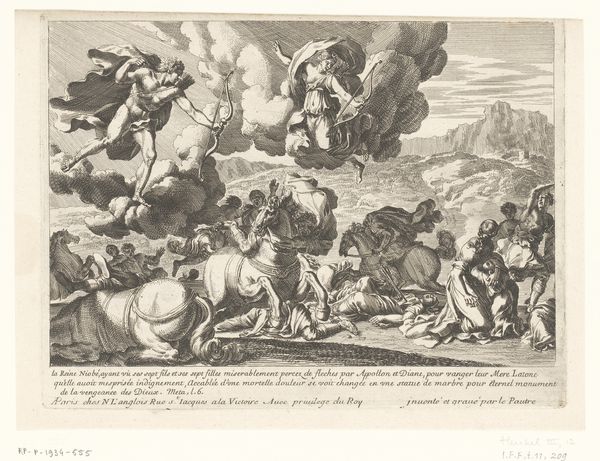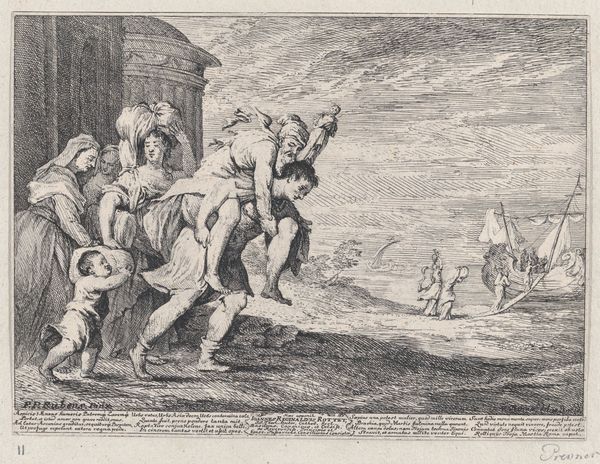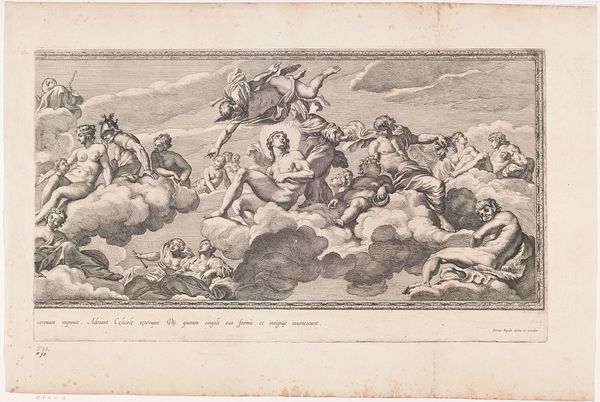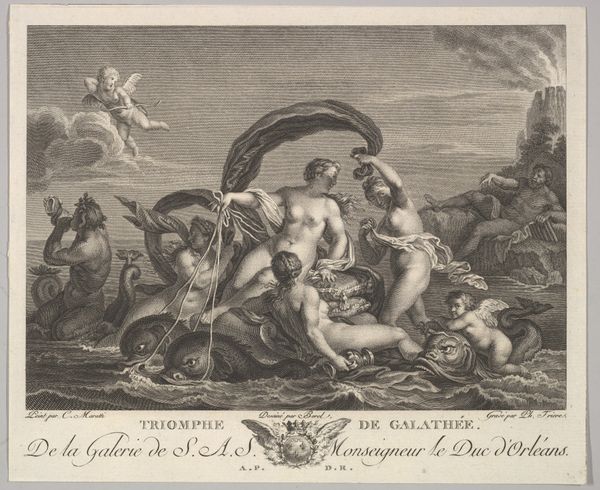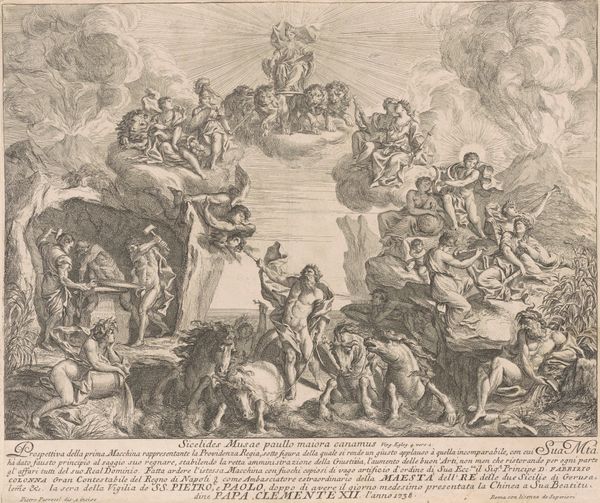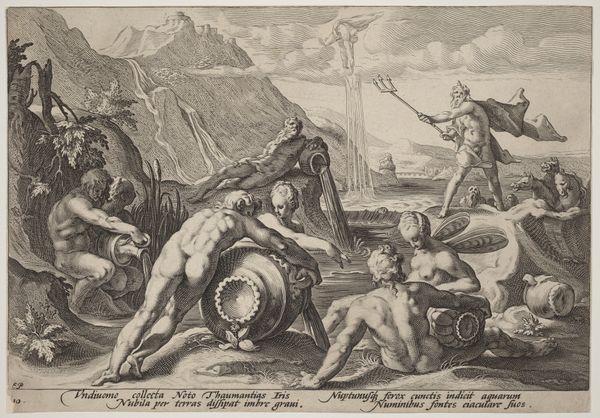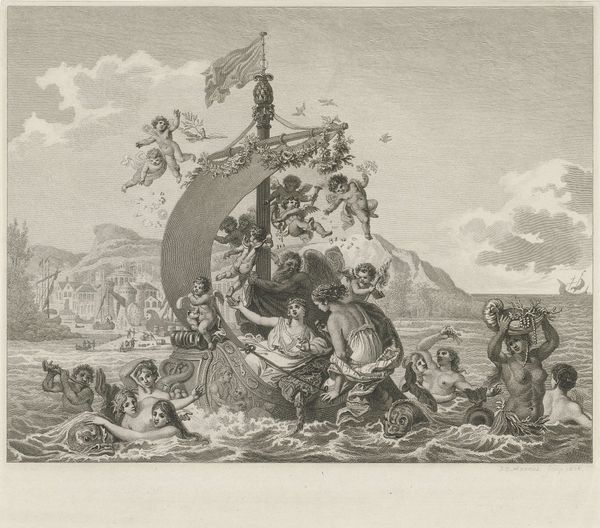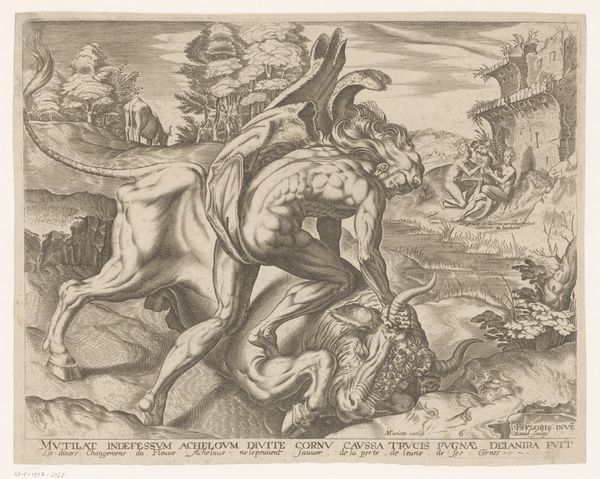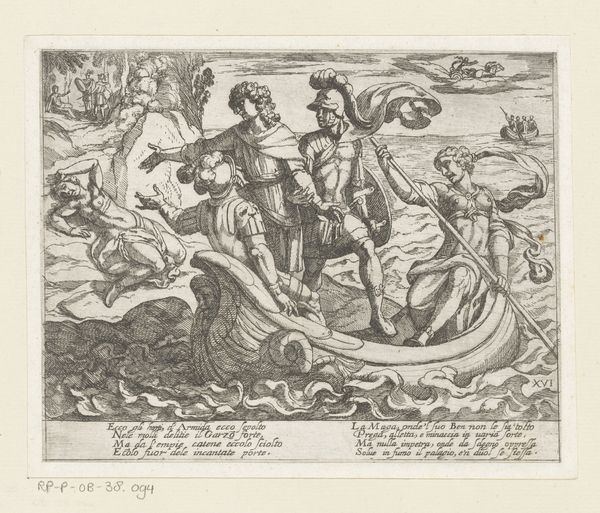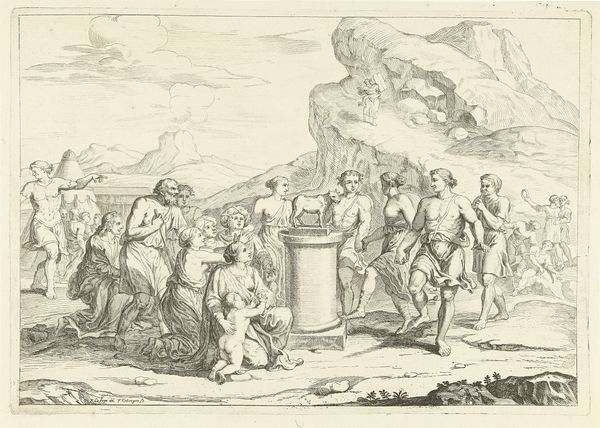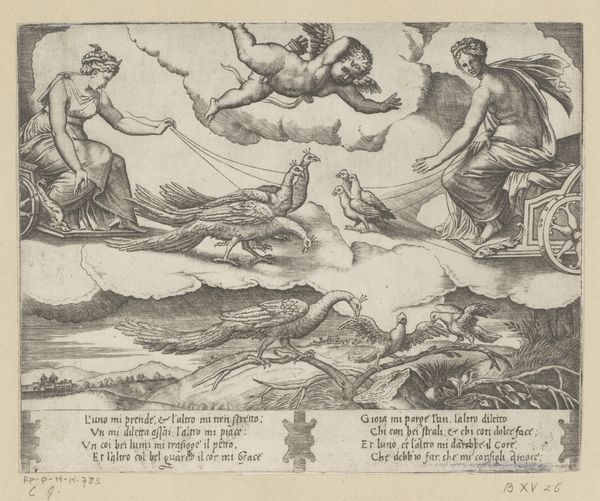
print, engraving
#
baroque
# print
#
old engraving style
#
figuration
#
mythology
#
history-painting
#
engraving
Dimensions: height 353 mm, width 450 mm
Copyright: Rijks Museum: Open Domain
Jean Lepautre created this etching, “The Triumph of Galatea,” sometime in the 17th century. Your eye is immediately drawn into a scene teeming with figures, all rendered in meticulous detail with fine lines and shading. The composition is divided into distinct zones, from the rocky landscape on the left to the bustling procession of sea creatures and deities on the right. The etching technique itself is crucial here. Lepautre’s masterful use of line creates a sense of depth and texture, allowing the viewer to discern individual forms within the complex scene. Notice how the lines vary in thickness and density, creating a subtle play of light and shadow that animates the figures and landscape. This dense network of lines invites a semiotic interpretation. Each stroke functions as a sign, contributing to an overall symbolic representation of Galatea's triumph. The artist seems to challenge fixed meanings by destabilizing established categories. This print isn't just an aesthetic object but also a site of ongoing cultural and philosophical discourse, open to interpretation.
Comments
No comments
Be the first to comment and join the conversation on the ultimate creative platform.
